Unveiling the Truth about Low Back Braces
Date Published: April 25, 2024
I hear using a low back brace is just a bandaid, is this true?
As Doctors of Physical Therapy, the concept of a back brace (in any form) is discussed almost daily. The use of a low back brace is a topic often surrounded by misconceptions. Some argue that it’s merely a temporary solution, likening it to a bandaid during the recovery process. However, as you will see throughout this blog, a back brace has a time and place for specific use and may be your lifesaver when you need it. In this blog post, we aim to dispel myths and shed light on the true role of low back braces in promoting back health.
Unveiling the Truth about Low Back Braces
Temporary Support, Long-Term Benefits
While it’s true that a low back brace provides temporary support, dismissing its significance as a mere bandaid overlooks its potential long-term benefits. A brace can offer crucial stability during periods of injury or vulnerability, allowing the body to heal and regain strength. This is especially true during ACUTE injuries (i.e. injuries that are initial in stages of healing and accompanied by significant pain, limited range of motion, and functional limitation). Think of a back brace as an artificial form of stability that will allow the source of pain to heal. Remember, a physical therapist’s job is to accelerate the healing process, and they may determine that use of a brace is critical to speed up recovery in the early stages of an injury.
Reducing Strain and Pain
Low back braces are designed to reduce strain on the lower back by providing additional support to the muscles and spine. This can be particularly beneficial during activities that exacerbate back pain or for individuals with conditions that require extra support.
Postural Correction
Many back issues stem from poor posture or movement mechanics. A low back brace can act as a reminder and support tool for maintaining proper posture, which is essential for preventing further damage and promoting overall spine health. Again, this is only short term in the initial stages of an injury.
Rehabilitation Aid
In certain cases, low back braces are recommended as part of a rehabilitation program. They can assist individuals recovering from injuries or surgeries by stabilizing the spine and facilitating a more controlled and supported range of motion.
Consultation with a Healthcare Professional
The effectiveness of a low back brace depends on the individual’s specific condition. Consulting with a healthcare professional, such as a physical therapist or orthopedic specialist, is crucial for determining whether a brace is appropriate and for receiving guidance on its proper use.
Dispelling the Myth
Bandaid or Supportive Tool?
Labeling a low back brace as a mere bandaid oversimplifies its role. While it provides immediate support, its impact can extend beyond a temporary fix. When used under the guidance of healthcare professionals, a low back brace can be an integral part of a comprehensive approach to back health.
Part of a Holistic Approach
Acknowledging that a low back brace is not a standalone solution is essential. It should be considered as part of a holistic approach to back health, including exercises, proper ergonomics, and lifestyle adjustments. It should only be used in a small window of time or as needed during the initial stages of a back injury.
Incorporating a low back brace into your journey towards a healthier, pain-free back
In conclusion, the use of a low back brace is not a one-size-fits-all solution, nor is it merely a bandaid. Its effectiveness depends on the individual’s condition, proper usage, and integration into a broader strategy for back health. By understanding its role and seeking professional guidance, individuals can make informed decisions about incorporating a low back brace into their journey toward a healthier, pain-free back.
You may always contact our Doctors of Physical Therapy at info@ptaccelerate.com or by text/phone at (949) 502-3388 or (805) 686-1934 if you have specific questions or concerns regarding the use of a back brace as well as the best course of action.


